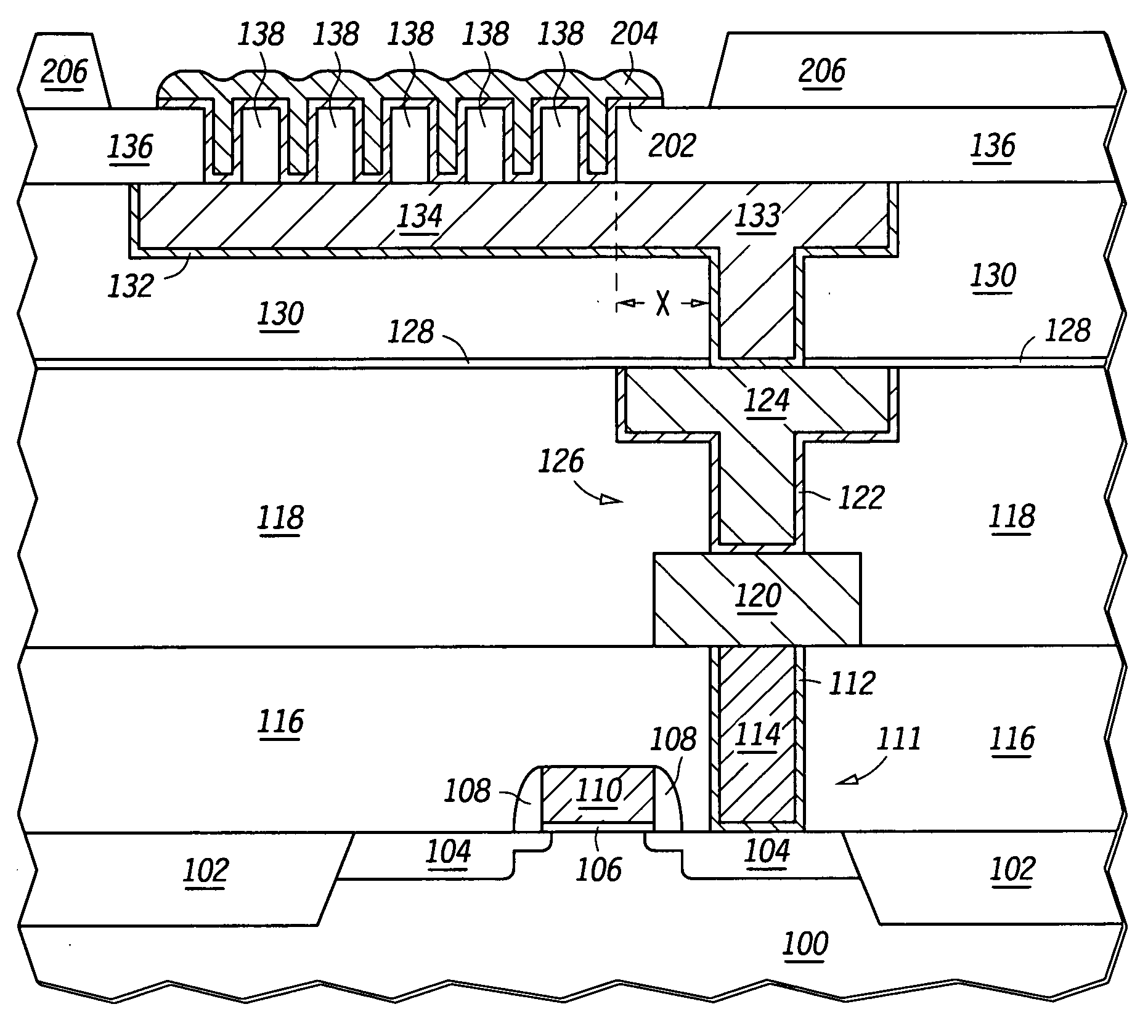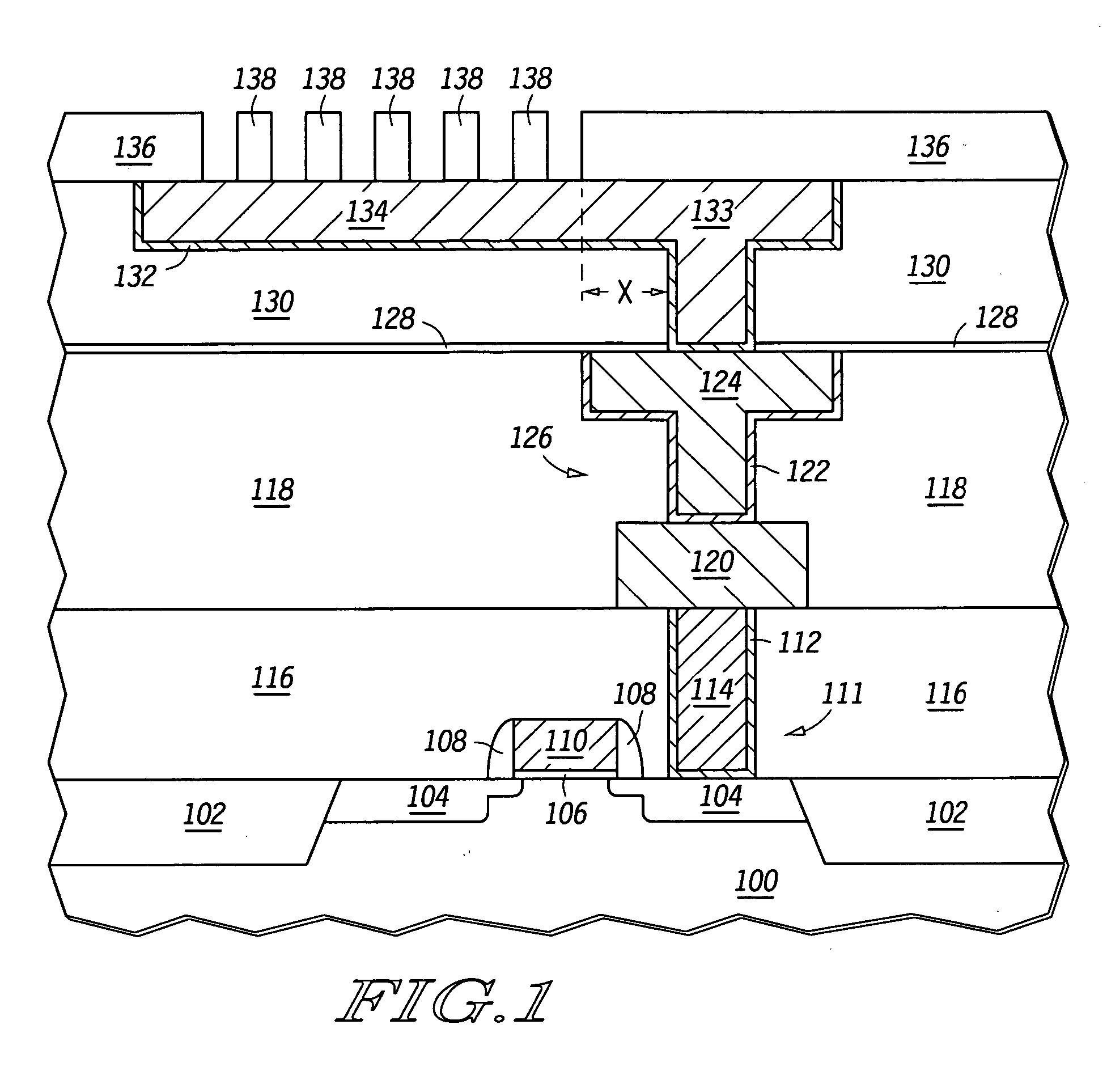Method for forming a bond pad interface
- Summary
- Abstract
- Description
- Claims
- Application Information
AI Technical Summary
Problems solved by technology
Method used
Image
Examples
Example
[0016] Skilled artisans appreciate that elements in the figures are illustrated for simplicity and clarity and have not necessarily been drawn to scale. For example, the dimensions of some of the elements in the figures may be exaggerated relative to other elements to help to improve understanding of embodiments of the present invention.
DETAILED DESCRIPTION OF THE DRAWINGS
[0017] Generally, the present invention provides a composite bond pad that is resistant to external forces that may be applied during probing operations, packaging operations, or other similar post-fabrication operations that utilize the bond pads. The composite bond pad includes a non-self-passivating conductive bond pad that is formed over a semiconductor substrate. A dielectric layer is then formed over the conductive bond pad. Portions of the dielectric layer are removed such that the dielectric layer becomes perforated and a portion of the conductive bond pad is exposed. Remaining portions of the dielectric ...
PUM
 Login to View More
Login to View More Abstract
Description
Claims
Application Information
 Login to View More
Login to View More - R&D
- Intellectual Property
- Life Sciences
- Materials
- Tech Scout
- Unparalleled Data Quality
- Higher Quality Content
- 60% Fewer Hallucinations
Browse by: Latest US Patents, China's latest patents, Technical Efficacy Thesaurus, Application Domain, Technology Topic, Popular Technical Reports.
© 2025 PatSnap. All rights reserved.Legal|Privacy policy|Modern Slavery Act Transparency Statement|Sitemap|About US| Contact US: help@patsnap.com



